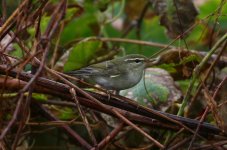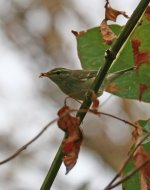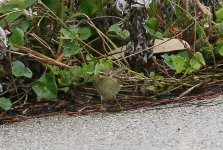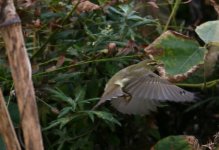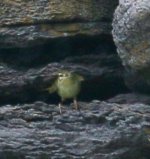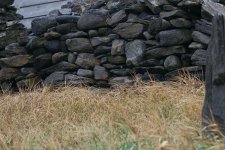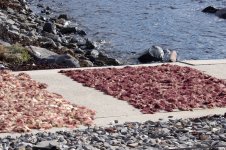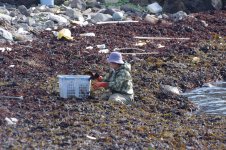Without being able to go abroad, and not much inside Japan, I have looked at some old photos.
This photo - I include a blown-up version, a smaller version, and the original view - was taken on Hegura Island off the coast of Ishikawa Prefecture Japan on 24 September 2015.
Hegura is a tiny island (you can walk around the edge of the island in an hour) which is famous for rareties (quite a few birds on the Japan list have only ever been seen on this island).
This bird stood out because of the strong yellow tones even at a distance and that's why I took photos of it in its hiding spot. I thought when I first saw the photos on a larger screen that it might be a Tickell's Warbler, but no-one I showed it to was willing to commit to anything at all.
On reflection, the eye pattern (brow and eye-ring) don't seem to fit anything clearly (to me, anyway).
I wonder if anyone here has any feeling about what this could be.
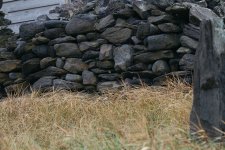
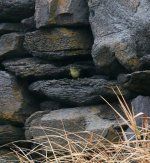
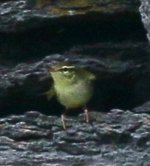
This photo - I include a blown-up version, a smaller version, and the original view - was taken on Hegura Island off the coast of Ishikawa Prefecture Japan on 24 September 2015.
Hegura is a tiny island (you can walk around the edge of the island in an hour) which is famous for rareties (quite a few birds on the Japan list have only ever been seen on this island).
This bird stood out because of the strong yellow tones even at a distance and that's why I took photos of it in its hiding spot. I thought when I first saw the photos on a larger screen that it might be a Tickell's Warbler, but no-one I showed it to was willing to commit to anything at all.
On reflection, the eye pattern (brow and eye-ring) don't seem to fit anything clearly (to me, anyway).
I wonder if anyone here has any feeling about what this could be.









